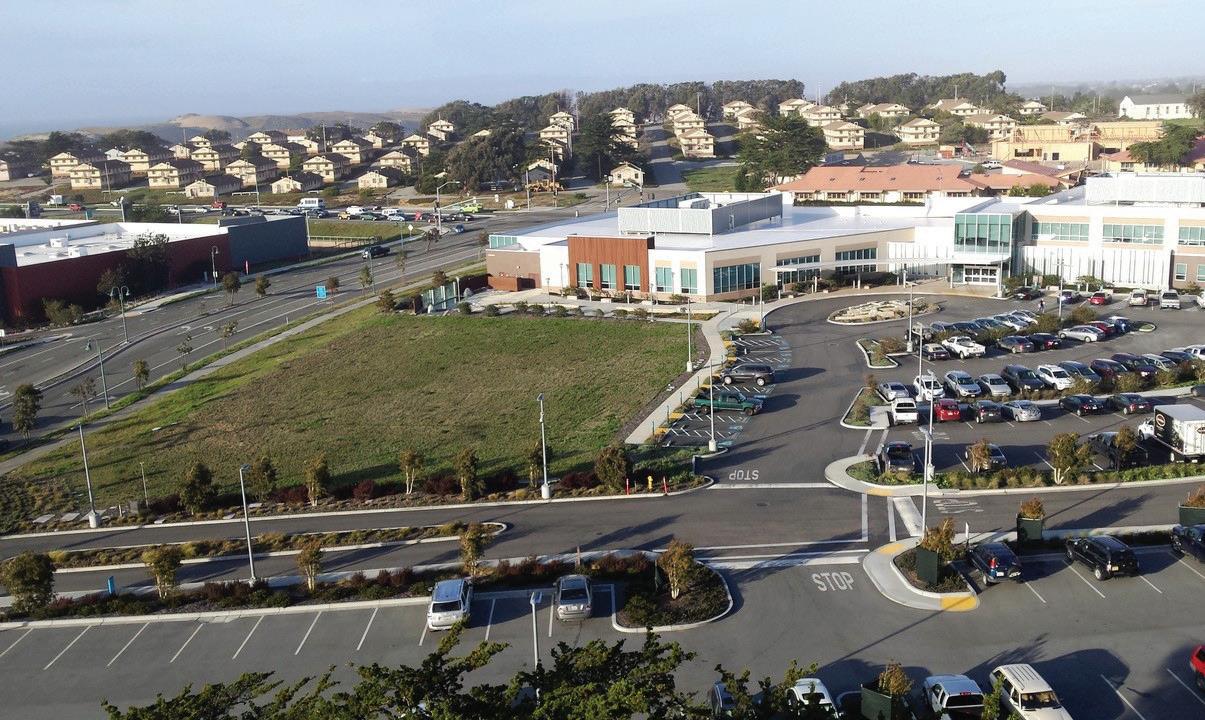
4 minute read
Building & Construction
Razing the past:
Marina, Calif., demolishes former Fort Ord housing units
By JULIE YOUNG | The Municipal
At one time, Fort Ord in Monterey Bay, Calif., was one of the most attractive military installations in the U.S. However, in recent years, what’s left of the fort has become a shadow of its former self, prompting the city of Marina to tear down dozens of old barracks and other buildings to create something that the whole community can use.
“We have completed approximately 40% of the demolition. The remainder is planned for removal and full build-out of new developments by 2028,” said Marina Mayor Bruce Delgado.
A rich history
Established as a World War I-era maneuver and artillery field, the area—originally known as the Gigling Reservation, among its other monikers — was christened Camp Ord in 1933 after Union Army Major General Edward Otho Cresap Ord. Throughout the ’30s, mobile combat units, including tanks, armored troop carriers and portable artillery, replaced the horse cavalry units that once trained on the camp. ABOVE: The former military barracks at Fort Ord were a shadow of their former past and led to blight in the city of Marina, Calif. (Shutterstock.com)
In 1940, the camp expanded to 2,000 acres and was redesignated an Army “fort” within a year. When the Seventh Infantry Division was reactivated to prepare for the possibility of U.S. involvement in World War II, it became the first major unit to occupy the new post. In the months and years that followed, several sub camps were created around Fort Ord to support the training of troops, and by 1947, the post was home to the Fourth Replacement Training Center.
“At its height, Fort Ord was home to more than 50,000 troops and served as a staging
area for soldiers of the Korean and Vietnam wars,” Delgado said.
With so many troops to process, train and house, Fort Ord contracted the Del E. Webb Construction Company of Phoenix, Ariz., to create 42 permanent buildings on the post between 1952 and 1954, including barracks, a guard house, stockade, administrative headquarters, quartermaster warehouses and water storage system. Fort Ord remained a center for basic and advanced infantry training until 1976 when the training center was closed. At that time, the post once again became the home of the Seven Infantry Division after the unit returned from a 25-year stint at the Korean Demilitarized Zone.
In 1991, Fort Ord became the largest military installation to be recommended for closure by the Base Realignment and Closure Commission. After working with Marines from Camp Pendleton to help quell the Los Angeles riots in 1992, the troops of Fort Ord transferred to Fort Lewis near Tacoma, Wash. The post closed in 1994, and most of the land was returned to the state of California for public use. According to Delgado, when Fort Ord closed, the local economy shrank by 20%.
“Recovery was slow and ongoing,” he said.
A new life
Overseeing the community’s economic recovery after the post’s closure was the Fort Ord Reuse Authority. The small, multi-governmental body, comprising elected officials at the local, state and federal level along with representatives of the armed forces and academic institutions, was responsible for finding appropriate uses for the former military land.
FORA was successful in establishing the California State University Monterey Bay campus on the former Army post, which Delgado said helped transform the community and breathe new life into it.
“Marina becoming a university town helped tremendously for retaining restaurants and other businesses, creating a demand for hotels, farmers’ markets and providing volunteers for park projects, seniors and youth assistance/mentoring,” he said. “Our city strategy is to try and be as university friendly as possible, such as hosting Otter Day (CSUMB’s mascot) festivals downtown.”
However, once FORA was closed in June 2020, responsibility for the undeveloped acreage at Fort Ord fell to a handful of jurisdictions, The new Marriott Hotel looks north over the new wellness center on property that once was part of Fort Ord, Calif. (Photo provided by the city of Marina)

The demolition of the former military barracks at Fort Ord will make way for new developments, including residential and retail space. (Photo provided by the city of Marina)

including Marina. FORA secured $26 million to demolish the remaining military buildings on the land, $15.1 million of which was given to Marina to raze 32 abandoned buildings near Marina High School and redevelop the property with more user-friendly amenities. Delgado said the area does not look or feel safe, and by removing the barracks, they can open up the corridor and remove the blight that kids see on their way to school each day.
“Once the buildings are demolished, we will start to create parks, hotels, 700 homes, offices, retail spaces, a movie theater and more,” Delgado said, noting that the rehabilitation of a former military installation is a marathon and not a sprint. “We still have a lot of work to do, but it’s important for us to make progress on these projects (to improve) the quality of life for our residents.”










